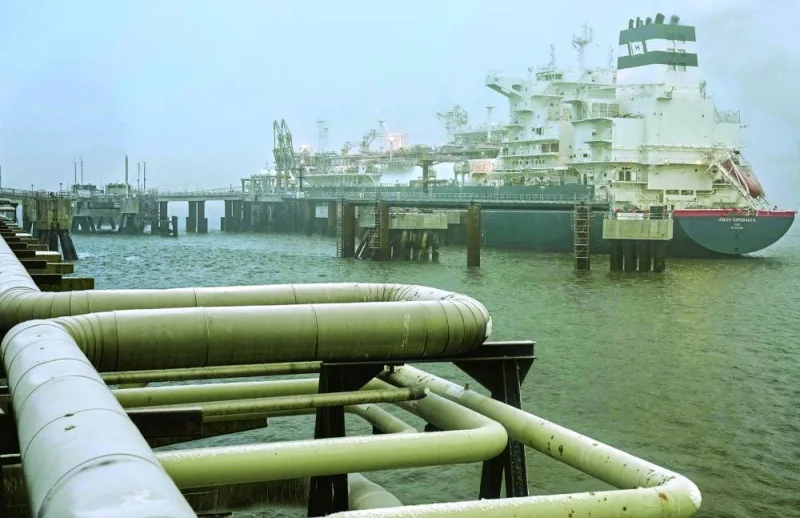Qatar was among the three major liquefied natural gas suppliers to Europe who accounted for 70% of LNG inflows in 2022, the International Gas Union has said in a report.
After a slow-growth period from 2018-2021, Europe accelerated regasification capacity additions in 2022 by bringing 14.5mn tonnes per year (mtpy) online, about 47% of global capacity additions last year.
The escalation of regional geopolitical tensions has spurred regasification construction by European markets to reduce dependency on Russian gas and enhance energy security.
Most of Europe’s new capacity in 2022 was in the Netherlands, which added 8.8mtpy in total.
This, IGU said, included the 2.9mtpy expansion of the Gate onshore LNG terminal and the installation of the 5.9 mtpy Eemshaven FSRU, which were commissioned in July and September respectively.
Finland brought a small-scale onshore terminal Hamina LNG online last year with capacity of 0.1 mtpy.
Europe’s largest gas consumer Germany became a new LNG importer in 2022, with its first LNG terminal the 5.5 mtpy Wilhelmshaven FSRU starting operation in December.
The floating terminal is planning an expansion in 2023 by installing another FSRU Excelsior, which will add regasification capacity by 3.7 mtpy.
This year, 16.8 mtpy of LNG import capacity has been commissioned in Europe as of April 2023 from four new terminals: Finland’s Inkoo FSRU, Germany’s Lubmin FSRU and Elbehafen FSRU, and Turkey’s Gulf of Saros FSRU, IGU said.
Another four projects in Europe with combined capacity of 9.78 mtpy are underway and aim to start up in 2023.
Utilisation of European regasification facilities spiked to a record-high of 65% in 2022 from 41% in the previous year, with LNG imports growing significantly by over 66% year-on-year.
Many European markets imported LNG at maximum capacity last year to meet gas demand, amid heightened geopolitical tension between Russia and Ukraine and reduced pipeline flows from Russia.
France ran its LNG import terminals at full capacity for most of 2022 with Belgium’s utilisation rate averaging 142% last year.
In the past, Europe has typically only imported LNG when winter was approaching to meet peak demand, instead mainly relying on stable piped gas for the rest of the year.
“Spiking LNG demand from Europe and a lack of growth in global LNG supplies resulted in a tight market in 2022 and soaring gas prices,” IGU noted.
Title Transfer Facility (TTF) prices reached a record high of around $100/mmBtu last August, following a major decline in Russian piped gas.
The main gas pipeline to Germany from Russia, Nord Stream 1, ceased transmissions to Europe in late August 2022 and one month later an act of sabotage took this pipeline out of service via an explosion, IGU said.

A Floating Storage and Regasification Unit (FSRU) is anchored during the opening of the LNG terminal in Wilhelmshaven, Germany on December 17, 2022. Europe’s largest gas consumer Germany became a new LNG importer in 2022, with its first LNG terminal, the 5.5 mtpy Wilhelmshaven FSRU starting operation.



